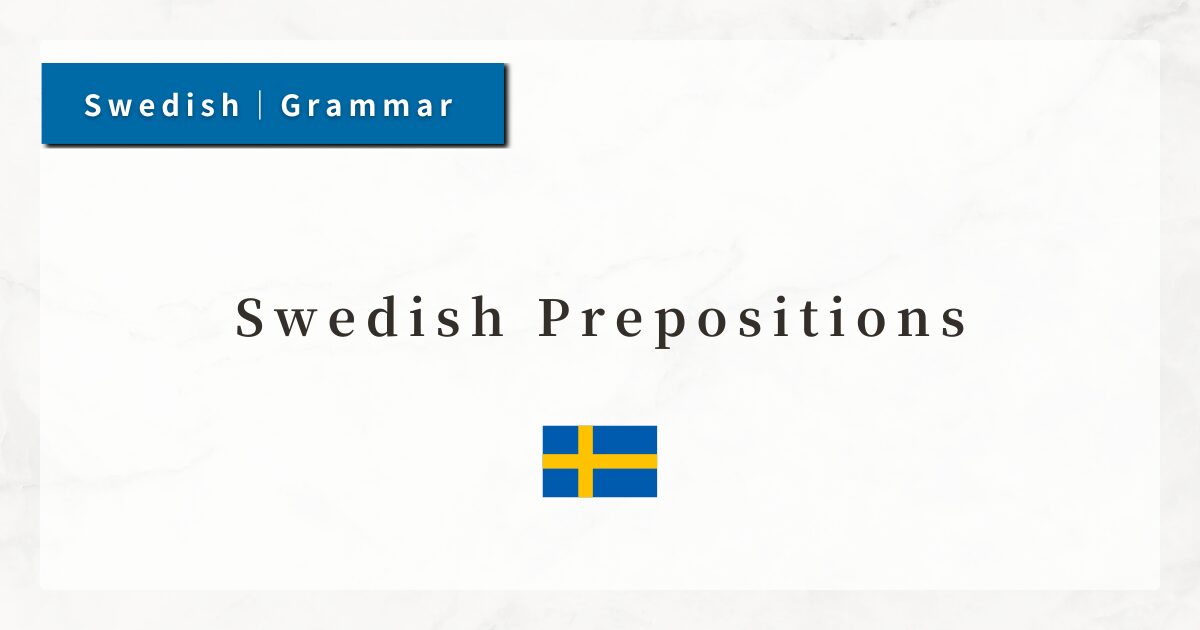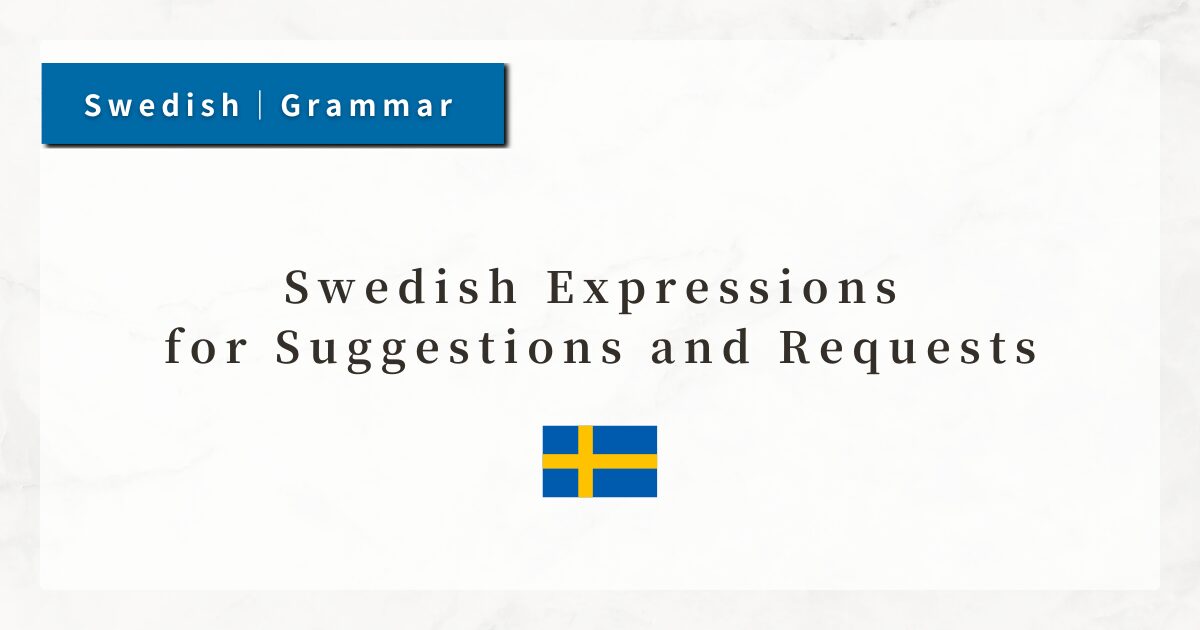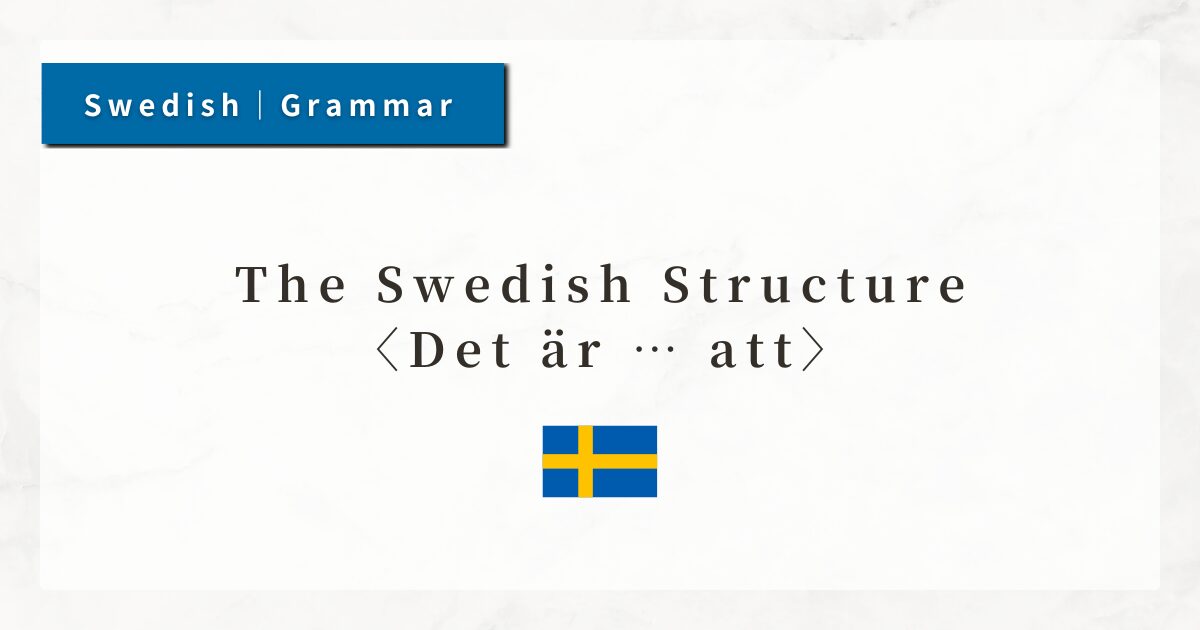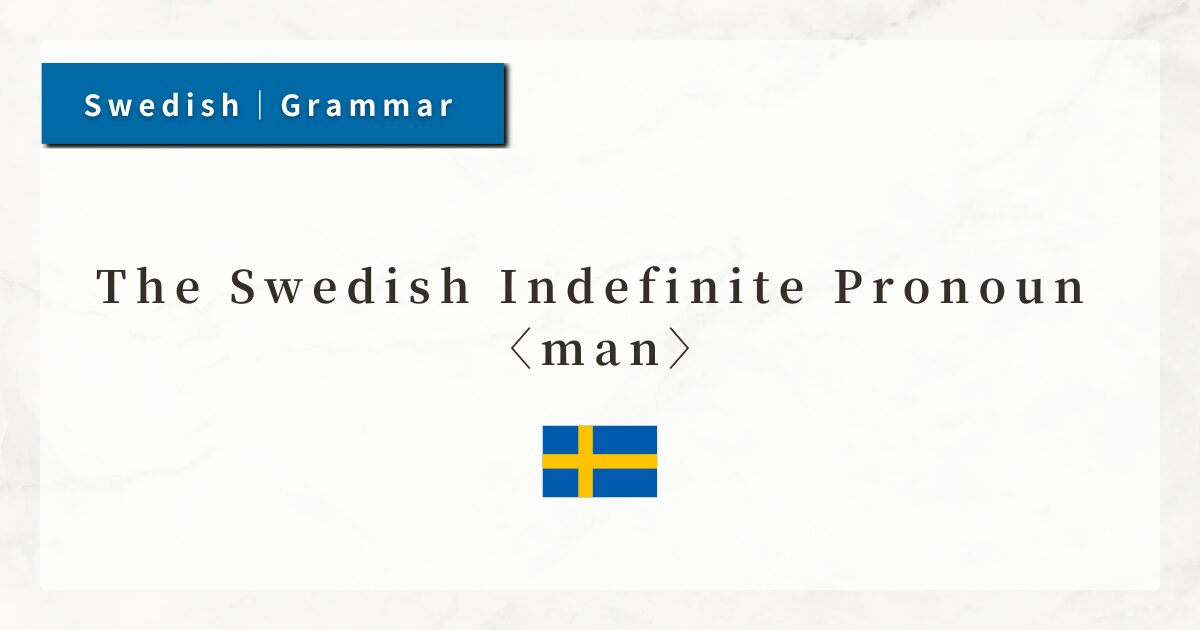#19 Swedish Conjunctions|How to Use Coordinating and Subordinating Conjunctions
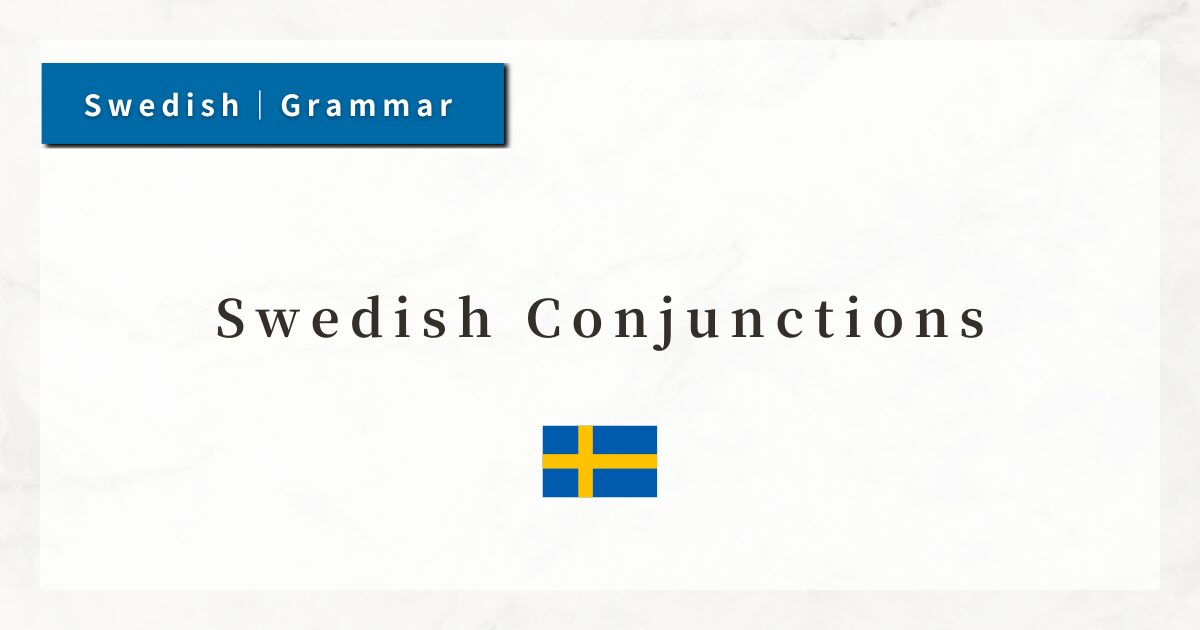
In Swedish, conjunctions are used to connect two clauses or phrases. Conjunctions are important elements that greatly influence both the structure and the meaning of a sentence.
In this lesson, I will explain the roles and usage of coordinating and subordinating conjunctions in Swedish, with examples.
1. Coordinating Conjunctions
1-1. What are coordinating conjunctions?
A coordinating conjunction connects two equal words, phrases, or clauses. In English, these correspond to “and / or / but / so.”
Since coordinating conjunctions do not change word order, they connect clauses or words directly, making the structure relatively simple.
- Jag gillar kaffe och te.
(I like coffee and tea.) - Han är trött, men glad.
(He is tired, but happy.) - Ska vi äta här eller gå hem?
(Shall we eat here, or go home?)
When a coordinating conjunction is used, two main clauses (each of which could stand alone) are linked together.
1-2. Common coordinating conjunctions
| Swedish | Meaning | Example |
|---|---|---|
| och | and | Jag gillar kaffe och te. (I like coffee and tea.) |
| men | but | Hon är trött, men glad. (She is tired, but happy.) |
| eller | or | Vill du ha kaffe eller te? (Would you like coffee or tea?) |
| för | because | Jag stannar hemma, för jag är sjuk. (I’m staying home because I am sick.) |
| så | so | Det regnar, så vi stannar inne. (It’s raining, so we’re staying inside.) |
1-3. Word order with coordinating conjunctions
Coordinating conjunctions do not change word order. The basic SVO (Subject + Verb + Object) structure remains.
- Jag är trött, men jag arbetar ändå.
(I am tired, but I am working anyway.) - Det regnar, så vi stannar hemma.
(It’s raining, so we are staying home.)
2. Subordinating Conjunctions
2-1. What are subordinating conjunctions?
A subordinating conjunction introduces a clause that is dependent on the main clause. In English, these include “that / because / if / when / although.”
The clause introduced by a subordinating conjunction is a subordinate clause, which complements the main clause.
2-2. Common subordinating conjunctions
| Swedish | Meaning | Example |
|---|---|---|
| att | that | Jag vet att hon kommer. (I know that she is coming.) |
| eftersom | because | Jag stannar hemma eftersom jag är trött. (I’m staying home because I’m tired.) |
| om | if | Om det regnar, stannar vi inne. (If it rains, we’ll stay inside.) |
| när | when | Vi äter middag när han kommer hem. (We’ll have dinner when he comes home.) |
| medan | while | Hon läser medan jag lagar mat. (She reads while I cook.) |
2-3. Word order changes inside subordinate clauses
In subordinate clauses, word order sometimes changes: the subject is followed by an adverb, and then the verb.
This is a rule unique to Swedish and does not exist in English.
- Jag tror att hon är hemma.
(I think that she is at home.)
→ Subject (hon) + Verb (är)
But when an adverb is included:
- Han säger att han inte gillar kaffe.
(He says that he does not like coffee.)
→ After att: “han (subject) → inte (adverb) → gillar (verb)”
This shifting of word order is one of the key features of subordinate clauses in Swedish.
3. Comparing Coordinating and Subordinating Conjunctions
| Aspect | Coordinating Conjunctions | Subordinating Conjunctions |
|---|---|---|
| Relationship | Equal | Subordinate |
| Independence of clauses | Both are main clauses | Subordinate clause depends on main clause |
| Word order | Remains SVO | May change (subordinate clause word order) |
| Examples | och, men, eller | att, om, eftersom, när, fast |
Conjunctions of both types are frequently used in Swedish writing and conversation.
It is important to learn their characteristics and get used to the word order changes through examples.
4. Summary
- There are two types of conjunctions: coordinating (which connect equal clauses) and subordinating (which establish dependency).
- Coordinating conjunctions connect clauses without changing word order (e.g., och, men, eller).
- Subordinating conjunctions may change word order within the subordinate clause (e.g., att, om, eftersom).
- Understanding the use of conjunctions and their effect on word order is essential for mastering Swedish sentence structure.

